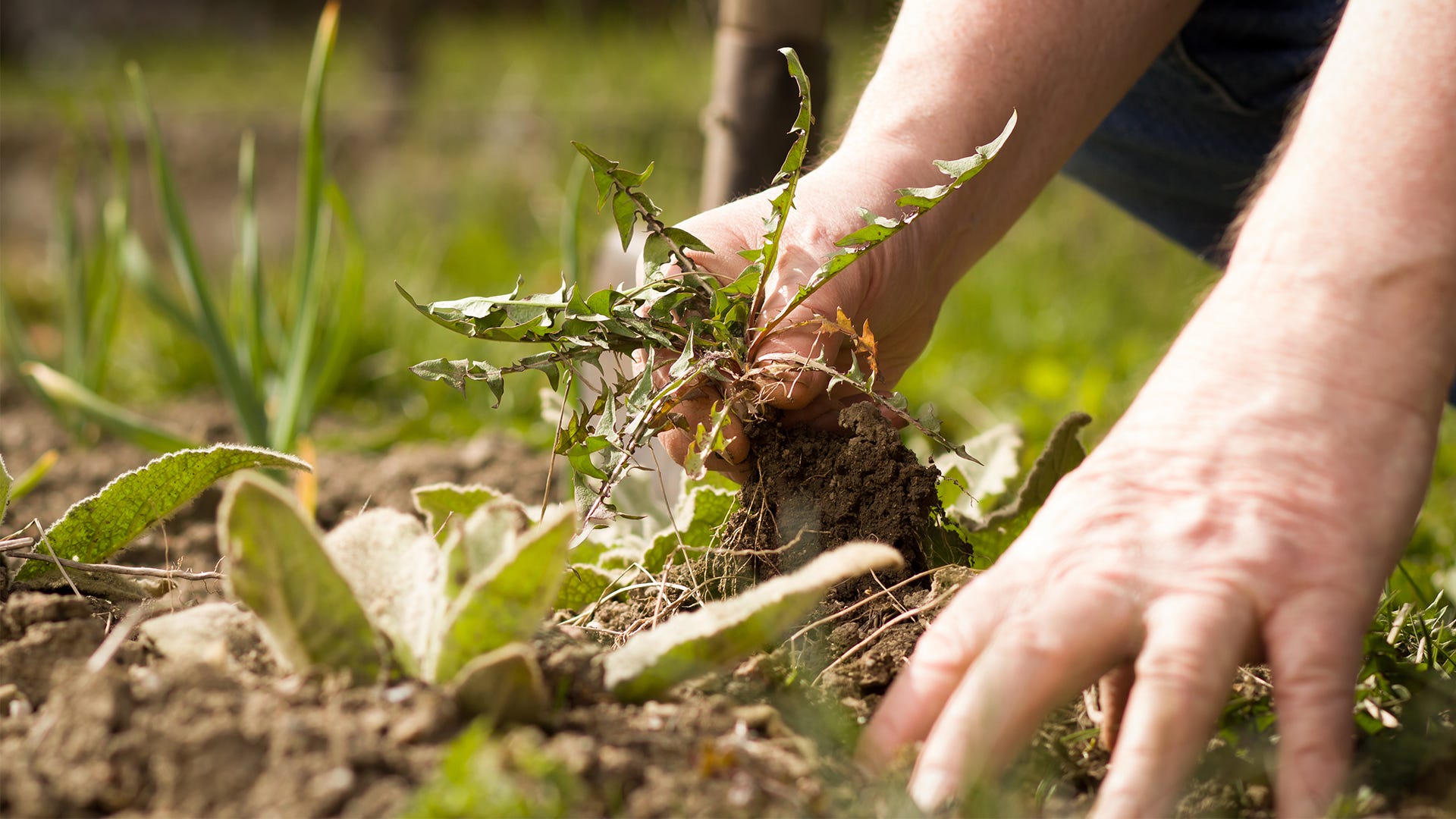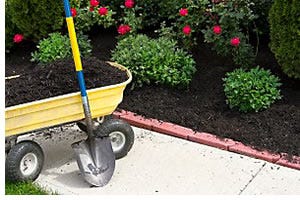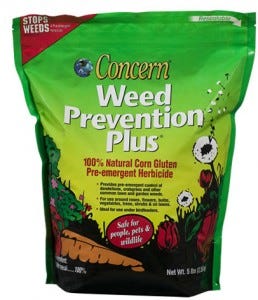
With these smart but simple weed control strategies, you can keep weeds from overwhelming your garden. No chemical poisons necessary!
You won’t find plants classified as “weeds” in a botany reference book. That’s because a weed is simply a plant growing where it’s not wanted, like in your vegetable plot or flower beds. Weeds are not only unsightly, they siphon moisture and nutrients away from the plants you want. Before you go arming yourself with chemical herbicides, remember that your garden is an ecosystem and that you don’t want to disrupt its balance with toxins. Instead, deploy these more effective—and less risky— weed control tactics for preventing and controlling plant invaders.
 Mulch, along with a sunlight-blocking layer of paper can be a tremendously effective weed control method.
Mulch, along with a sunlight-blocking layer of paper can be a tremendously effective weed control method.- Early exposure. You can get weeds to show themselves before you plant by turning or tilling the soil a few weeks before the growing season begins, bringing dormant seeds to the surface. After they sprout, hoe or pull them out before you put in seeds or transplants.
- Hot compost. Weed seeds can survive in compost piles that don’t heat up to 130 degrees F for several weeks. When you turn your compost, check to be sure it has a warm and steamy center to deactivate any seeds before spreading it on your beds in spring.
- Message delivered. Persistent weed control problems can be an indicator that your garden’s soil is out of balance. Clover, for example, colonizes areas where the soil is low in nitrogen, while dock moves into soil that’s acidic. Get your soil tested (at a low, or even no, cost from your county’s cooperative extension office; find yours at csrees.usda.gov/Extension/) and use the results to build soil that’s rich in nutrients, with the ideal pH of 6 to 6.5.
- Mulch magic. Bare soil is an open invitation for weeds. Blanket your garden with a 4- to 6-inch layer of natural mulch, such as grass clippings, shredded leaves, or straw (not hay, which includes seeds that will become weeds), right when you plant and replenish the mulch as it decomposes all year long.
- Good news. A layer of paper makes natural mulches even more effective at keeping sunlight from reaching weed seeds. To utilize this weed control method, spread an eight-sheet-thick layer of newspaper pages (newsprint sheets only, no glossies) or a single layer of kraft paper (like paper grocery bags) over the soil. Moisten it a bit to help keep it in place, then top with a layer of organic mulch, such as grass, leaves, or straw.
- Green carpet. Living mulches, including soil-nourishing cover crops such as buckwheat and vetch, fill in spaces where weeds grow and shade the soil, preventing sunlight from reaching weed seeds. Low-growing herbs such as thyme are not only fragrant and flavorful, they also work as weed-obstructing ground covers.
- Feeding time. Spreading fertilizers over a whole bed can inadvertently nourish weeds as well as your plants. Apply plant foods to the root zones of crops and resist the urge to use more than package recommendations, as weeds can take up the excess.

- Corn control. A nontoxic by-product of corn processing, corn gluten meal contains an enzyme that inhibits seeds from germinating. Concern® Weed Prevention Plus® is a handy corn gluten meal you can spread on garden beds for weed control. Apply in spring as a pre-emergent that has no residual effects on the environment.
- Hands on. When weeds do emerge, pull them while they are young before they flower and begin producing seeds. Be sure to get the whole root system of each weed, as many of the most troublesome types can grow back from just a small piece left behind in the soil.
- Persistence pays. The toughest weeds often survive an assault or two. But if you repeatedly and consistently cut off the tops, you stop them from photosynthesizing, and eventually you exhaust their growing energy.
- Soap stopper. Potassium salts of fatty acids (herbicidal soap) smothers weeds to death, yet is safe to use around your family and pets. Safer® Brand Fast Acting Weed and Grass Killer comes in a spray bottle that lets you target the pest plants without affecting your crops and flowers.
Quick Tip to Help Wildlife
While you want to eliminate weeds in your beds, leaving uncultivated areas around your garden provides shelter to beneficial insects that prey on pests.
Your Efforts at Weed Control
Weeds are major headache for gardeners, but with a little planning and time you can eliminate them from your flower beds, yard and garden. Have you tried any of the ideas we mentioned above? Have you got your own tactics for dealing with weeds? Let us know your thoughts by continuing the conversation when you visit Safer® Brand on Facebook. Safer® Brand aims to solve your gardening problems with our line of OMRI Listed® products which have been deemed compliant for use in organic production. You can learn more about them by subscribing to our E-Newsletter, which also includes links to helpful articles for your garden, lawn and household. Plus, you'll get new product announcements!



